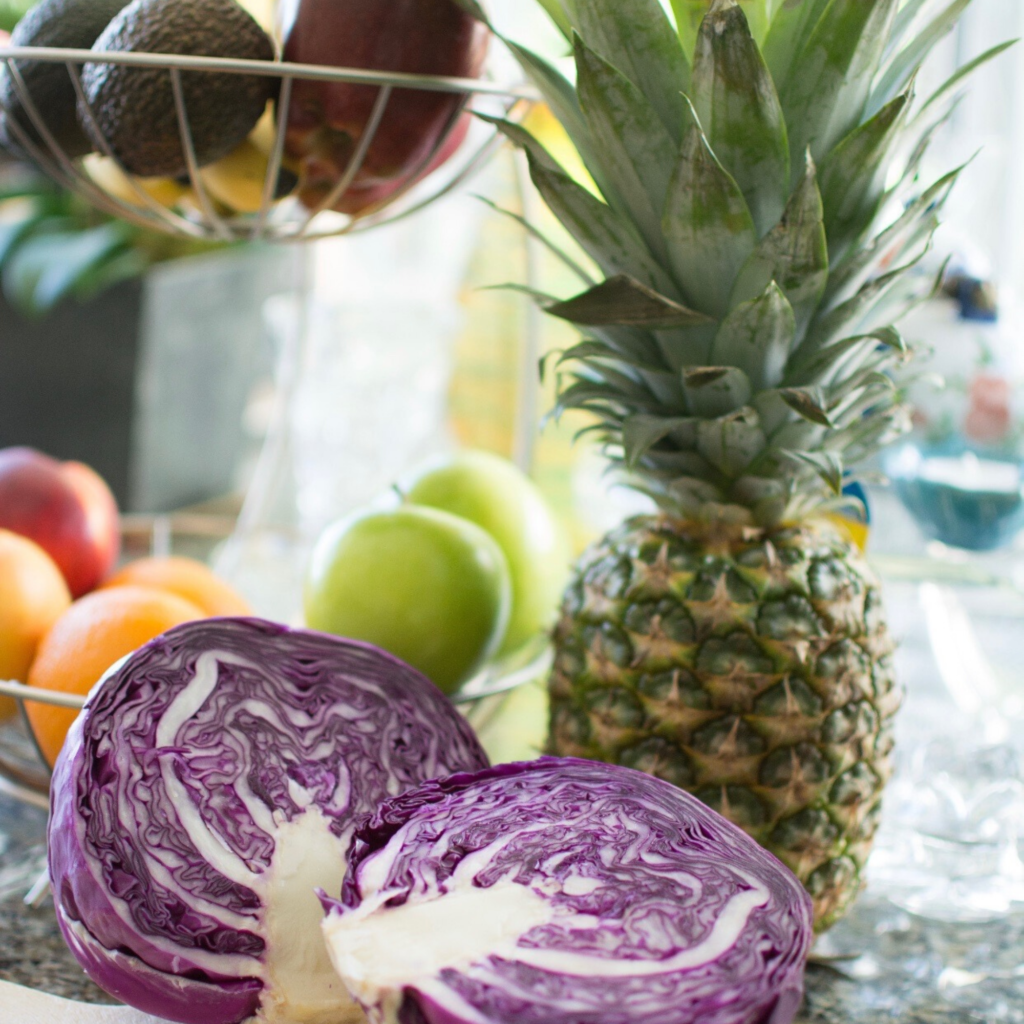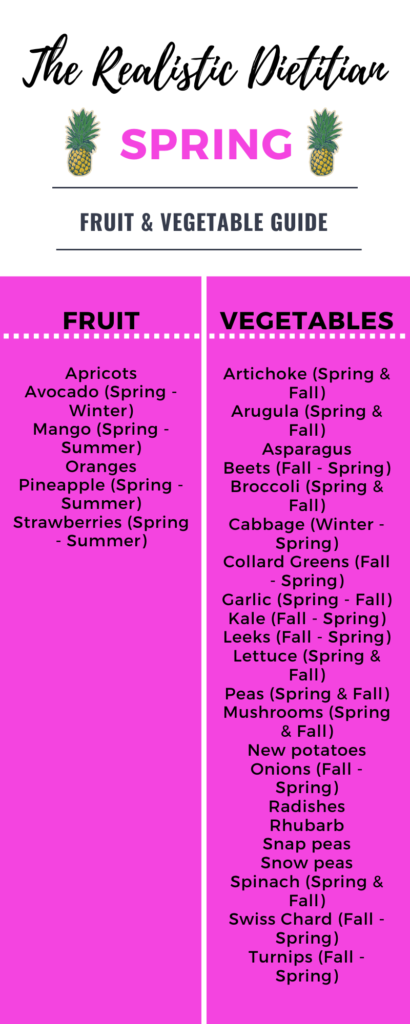Purchasing in season fresh fruits and vegetables will ensure that you never overpay and they are optimal in taste. Here’s your Spring Fruit and Vegetable Guide.

Have you ever spent a ridiculous amount for a fruit or vegetable and thought what the heck, why was that WAY more than what I typically pay?! That’s because it wasn’t in season. I’ve come to recognize that most individuals have no idea what is in season or not, so I decided to help you out and create a Spring Fruit and Vegetable Guide! Scroll down to the bottom and there is an infographic with the same information that’s listed below, you can save the image on your phone or download as a file to print.
The key to smart grocery shopping is to purchase fresh fruits and vegetables that are in season so that you never overpay. They will also be at their peak in regards to taste, look and feel. If you want to preserve them to last all year round you can freeze, can, or turn them into a jam! Expert tip for freezing: cut up/prepare the fruit or vegetable in the way that you would use them to allow for easier consumption and use when you thaw them out.

Spring Fruit
- Apricots (Spring – Summer)
- Avocado (Spring – Winter)
- Mango (Spring – Summer)
- Oranges
- Pineapple (Spring – Summer)
- Strawberries (Spring – Summer)
Spring Vegetables
- Artichoke (Spring & Fall)
- Arugula (Spring & Fall)
- Asparagus
- Beets (Fall – Spring)
- Broccoli (Spring & Fall)
- Cabbage (Winter – Spring)
- Collard Greens (Fall – Spring)
- Garlic (Spring – Fall)
- Kale (Fall – Spring)
- Leeks (Fall – Spring)
- Lettuce (Spring & Fall)
- Peas (Spring & Fall)
- Mushrooms (Spring & Fall)
- New potatoes
- Onions (Fall – Spring)
- Radishes
- Rhubarb
- Snap peas
- Snow peas
- Spinach (Spring & Fall)
- Swiss Chard (Fall – Spring)
- Turnips (Fall – Spring)
All Season Fruit
- Avocado
- Banana
- Lemon
- Lime
- Passionfruit
All Season Vegetables
- Carrots
- Celery
- Green beans
- Mushrooms
- Onions
- Potatoes
- Watercress
- Most herbs



Leave a Reply